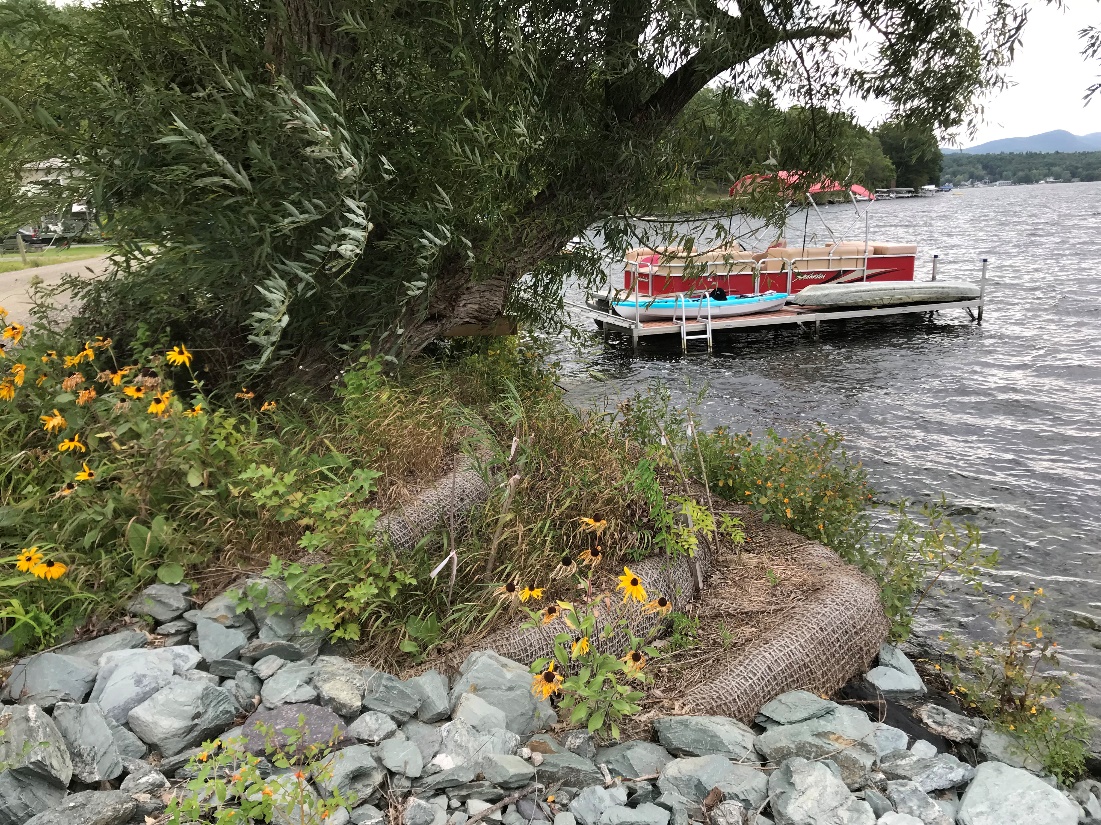## Want to Keep Your Lakefront Paradise Pristine? Vermont DEC Has Your Back!
Imagine waking up to the shimmering expanse of a pristine Vermont lake, the peace and quiet broken only by the gentle lapping of waves. Sounds idyllic, right? But keeping that shoreline sparkling can be a challenge. Erosion, invasive species, and development pressures all threaten the beauty and health of our precious lake ecosystems.

Thankfully, the Vermont Department of Environmental Conservation (DEC) is stepping up to help. They’ve just released a wealth of guidance designed to empower property owners to become stewards of their shorelines. From simple tips to comprehensive strategies, this new resource equips you with the knowledge to protect your lakefront haven for generations to come.

Driveway and Pathway Improvements

Driveways and pathways, while essential for accessing lakefront properties, can significantly contribute to erosion and sedimentation if not properly designed and maintained. The Vermont DEC emphasizes the importance of implementing best management practices to minimize these impacts.
One effective strategy is to utilize permeable paving materials, such as permeable concrete or gravel, which allow water to infiltrate the ground instead of running off directly into the lake. This reduces runoff volume and prevents the transport of sediments and pollutants.
Furthermore, incorporating vegetated buffers along driveways and pathways can help filter runoff and stabilize the soil. Native plants with deep root systems effectively absorb excess water and prevent erosion.
Proper grading is crucial to ensure that water flows away from the shoreline and prevents pooling near the foundation of structures. Sloping driveways and pathways gently away from the lake helps direct runoff towards designated drainage areas.
Lake Wise Program: Going Above and Beyond for Lake Health
Voluntary Initiative
The Lake Wise Program is a voluntary initiative spearheaded by the Vermont Lakes and Ponds Program within the Department of Environmental Conservation (DEC). This program encourages property owners to adopt lake-friendly practices that protect and enhance the health of their shorelines and the surrounding aquatic ecosystems.
Unlike mandatory regulations, the Lake Wise Program focuses on promoting voluntary actions by providing technical assistance, recognition, and community engagement opportunities to participating property owners.
Benefits for Property Owners
Property owners who choose to participate in the Lake Wise Program can reap numerous benefits, including:
- Recognition and Certification: Property owners who successfully meet the program’s criteria receive recognition and certification, signifying their commitment to sustainable shoreline management.
- Technical Assistance: The Lake Wise Program offers personalized technical assistance to property owners, guiding them through the implementation of best management practices tailored to their specific needs and site conditions.
- Community Engagement: The program fosters a sense of community among lake-friendly property owners, providing opportunities for networking, sharing knowledge, and collaborating on projects that benefit the entire lake ecosystem.
- Reduced shoreline erosion and sedimentation
- Improved water quality
- Enhanced wildlife habitat
- Increased public awareness and appreciation for lake conservation
Impact on Vermont’s Lakes
Since its inception in 2013, the Lake Wise Program has had a demonstrable positive impact on Vermont’s lakes.
Over 1,134 lakeshore owners have had their properties assessed, and 389 have earned a Lake Wise Award. This widespread participation has resulted in the implementation of a multitude of best management practices, contributing to:
Resources and Engagement: Connecting with Vermont DEC
Sharing the Edge Booklet
The Vermont DEC provides a valuable resource known as “Sharing the Edge,” a comprehensive booklet that outlines regulations, best management practices, and the importance of healthy shorelines. This booklet serves as a guide for property owners, helping them understand their responsibilities and how to protect the natural resources associated with their lakefront properties.
Permit Navigator
Navigating state environmental permitting requirements can sometimes be complex. To simplify this process, the Vermont DEC offers an online tool called the “Permit Navigator.” This user-friendly platform allows property owners to easily access information about various permits, determine their applicability, and submit applications electronically.
Contact Information
For specific questions or assistance regarding shoreland regulations, best management practices, or the Lake Wise Program, property owners can reach out to their regional Lake and Shoreland permit analyst. These experts provide personalized guidance and support to ensure compliance with state requirements and promote responsible shoreline management.
The Lake Wise Program coordinator is also available to answer questions and provide information about the program’s benefits and eligibility criteria.
Conclusion
The Vermont DEC’s recent guidance on shoreland protection offers a crucial roadmap for property owners seeking to balance development with environmental responsibility. The article highlights the delicate balance that exists between utilizing Vermont’s stunning lakes and rivers and preserving their ecological integrity. By outlining best practices for managing erosion, preventing pollution, and promoting healthy vegetation, the DEC empowers homeowners to become stewards of these vital resources. This proactive approach not only safeguards the beauty of Vermont’s natural landscape but also ensures the long-term health of our waterways, benefiting both wildlife and future generations.
As Vermont continues to grapple with the challenges of growth and development, the implications of this guidance extend far beyond individual properties. The decisions made by property owners along our shores directly impact the quality of our water, the stability of our ecosystems, and the overall well-being of our communities. Embracing these recommendations is a collective responsibility, requiring a commitment to sustainable practices and a shared vision for a thriving Vermont. By working together, we can ensure that the pristine beauty of our lakes and rivers remains a defining characteristic of our state for generations to come.
Let’s not just be observers of Vermont’s natural wonders, but active participants in their preservation.